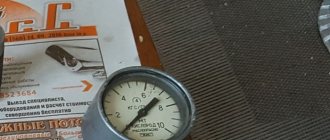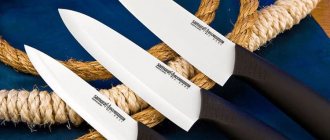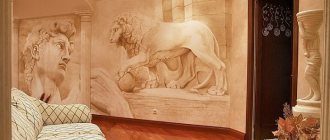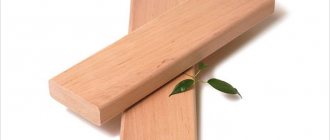39
TOTAL
ShareTweetMailruFacebookGoogleTwitterPinterestPocketWhatsappTelegramSubscribe
In this master class you will find detailed patterns for sewing patchwork pillows with your own hands, with detailed photographs.
In addition to the usual quilting tools, you will also need a ruler with 30 or 60 divisions on it.
Before you start, pay attention to a few things:
A. Following these instructions, you will get a pillow about 50 cm wide.
B. Here we will show you how to make TWO sides of a pillow that will be a mirror image of each other. In this tutorial they are used as the back and front of ONE pillow, but you can also use them to make the front of TWO pillows.
But at the same time, you should NOT be lazy and try to sew only ONE side. You need to do both sides to get the right number of pieces. Once you have all 12 squares sewn together, you'll understand! Just realize that by only doing half of this sample, you will NOT get the same result as in the photo.
B. Both sides are designed the same way.
D. You can make this pillow in any size you want. Just make sure you cut enough strips to end up with 12 squares.
D. There will probably be remnants of fabric:
The ends of the strips from which the pattern will be combined can be used for other work, since the remains will be rectangular.
From scraps of the main pillow structure you can assemble a BONUS PART. How to do this will be shown at the end of this MK.
Instructions for sewing a patchwork pillow with your own hands + diagrams
Step 1:
Prepare the fabrics from which you will sew the pillow. It is best to lightly starch them before work. Later you will need to combine different pieces diagonally to create the desired pattern, so the fabric should not stretch.
Make 3 sets of strips of the indicated sizes (cut along the width of the fabric):
- fabric 1: 3 strips 10 cm wide;
- fabric 2: 3 strips 6.25 cm wide;
- fabric 3: 3 strips 10 cm wide.
fabric strips for a patchwork pillow
Lay out the fabrics from left to right: first, second, third.
Step 2
Sew three strips together. Follow this step for all three sets of stripes.
Press the seams in one direction each time, they should go in the same direction (up-up, or down-down). It doesn't matter which way you press the seams, as long as they do NOT face each other or in different directions.
Step 3
Measure the height of the resulting strip, it should be about 24 cm, but it could be a little less (depending on the width of the seam allowances). Either way, use the height of the strip to cut SQUARE.
Remember to trim the edge of your strip regularly to ensure you end up with squares. You should have enough fabric to be able to do this after each time. Sort the resulting cuts into 2 piles of 6 pieces.
Step 4
The next step requires your special attention! Fold the squares from the first pile diagonally as shown in the following photo.
And fold the squares from the second pile diagonally like this:
Step 5
Take the right part from the first pile and the right part from the second, connect them together. Repeat this for the remaining scraps (the ones you are not working with yet, then set aside).
Align the two triangles diagonally as shown in the photo below (no need to draw lines yet). Use pins and basting for precision. Then sew the flaps and trim off the excess, the seam needs to be smoothed out.
Step 6
Now take a ruler with 30 or 60 divisions and place it as shown in the following photos. Make sure that it moves 30 divisions away from the main seam to the right, make a mark. Then flip the ruler over and repeat for the left side.
Draw lines along the marks left. You should end up with a wedge that is 60 divisions wide, with a seam in the middle.
Before you cut the fabric along the lines, make sure the marks are accurate and symmetrical.
Cut off the excess, SAVE THE REMAINS!
Step 7
Now it's time to trim the ends of the seams at the top of the wedges.
Place three identical wedges on the table.
Place two of them right sides together. Fasten them on one side with pins and make a mark.
Make sure that the seams on the wedges match each other exactly by connecting their tops with a pin.
Sew the wedges together. Stop in the middle, reaching the seams in the center.
Unfold the resulting block and smooth out the seam.
Now sew the last of the three remaining wedges to the block in the same way.
Step 8
Now follow the same steps to make three more blocks.
Well, finally, we assemble the blocks so that a circular pattern emerges, and we chop them with pins and sew them together.
You end up with a lot of seam tips gathered in the center. They can be stacked on top of each other and sewn. But you can also use any other method that suits you.
Don't forget to press the seams.
Step 9
Well, now you have made one flower in the shape of a star. Now assemble the remaining pieces in the same way to form the second star. See how they mirror each other?
Step 10
Now you need to quilt the resulting parts. You can use muslin as a lining. You can stitch the stars any way you want. Below are two examples (easy way and hard way).
Step 11
Trim the protruding tips of the stars. You can use tape or any other round object for this, tracing it around the edge.
Now fold both quilted pieces right sides together and sew the ends together (along the blue line). This option is designed for sewing one pillow. If you want to make two, use a different fabric for the back of the pillow. Sew the parts around the perimeter, leaving an area of 18-20 cm open.
Turn the pillow out.
Smooth it out.
Step 12
Start stuffing. To do this, you can use a standard bag with pillow filling. It's better to start from the top of the star.
Hand stitch the remaining part.
Step 13
If you want, you can decorate the center of the pillow with buttons. Attach the button pieces to each side of the pillow, and then press them firmly together. This will make the pillow look like a real flower.
Or you can leave everything as it is.
READY!
The approximate size of the pillow is 50 cm, height is about 16 cm. The red and blue pillow is larger, it uses fabric strips of 10 cm each. Therefore, its width was about 62 cm, and accordingly the filler consumption was also greater (about one and a half standard bags).
What types of pillows are made from scraps: ideas and patterns
Patchwork pillows can be sewn in completely different shapes and sizes, it all depends on the preferences of the person for whom it is intended. Both beginning needlewomen and craftswomen with extensive experience can sew a patchwork-style pillow with their own hands. To choose a job according to your level, it is best to look through existing sewing patterns and choose a product that you can complete.
Schemes for patchwork pillows
The simplest patchwork patterns are solid squares or geometric shapes of the same type and size.
- Here, for example, are patterns of a pillow in patchwork sewing for beginners “square within a square”
- “American square” - a square is placed in the center, surrounded in a spiral by rectangles of different lengths and the same width.
Schemes for more experienced connoisseurs of patchwork style:
- The “diamond” composition consists of complex quadrangles and pentagons; sewing will require the production of 6 types of templates
- The mill pattern includes a combination of squares and triangles of different sizes.











